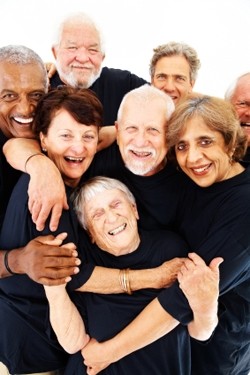How To Make Home A Safe Place For Seniors

A room-by-room list of modifications to make independent living easy and safe for an older friend or family member.
Creating a safer home
Your parents spent a lifetime creating memories in their home. To help them to continue living independently there in their later years, a few alterations to their house may need to be made. Wendy Scott, a registered nurse with Nurse Next Door in Burnaby, B.C., and Lisa Wiseman, a registered nurse with Eldercare Home Health in Toronto, show you how to make your parents’ home safer and more functional. (These are just broad suggestions; if you have questions, consult a health-care professional.)
1. Outdoor Entry
• Hang a lockbox with a key on the front door; in case of an emergency, EMS can contact a family member for the code.
• Decide if sturdy handrails, a ramp or an assistive device would best help your parents manoeuvre around their porch.
2. Indoor Entry
• Remove clutter, and tape or put nonstick backing on area rugs. (You should do this in all rooms of the home.)
• Set a nonslip bench or chair against a wall so your parents can sit down when putting on their shoes.
3. Bedroom
• Place a phone and a lamp within reach of the bed.
• Install a grab bar or a Sask-a-pole (consult a health-care professional) to help your mom or dad get out of bed.
• Keep a list of emergency numbers and current medication (prescription and nonprescription) by each phone (in large font).
• Ensure the bed is at an appropriate height. When sitting on the side of the bed, your parents’ hips should be higher than their knees, and their feet should touch the floor.
4. Hallways
• Consider putting handrails in the hallways so there is always a way for your parents to steady themselves.
• Install motion-activated lights on the path from your parents’ bedroom to the washroom so they will always have sufficient lighting.
5. Stairs
• Install sturdy handrails that extend six inches beyond the top and bottom steps on both sides of the stairwells.
• Encourage your parents to count the number of steps, or put markers that signal the top and bottom of each staircase.
• Have good lighting, as well as on-off switches, at the top and bottom of the stairs.
Creating a safer home
Your parents spent a lifetime creating memories in their home. To help them to continue living independently there in their later years, a few alterations to their house may need to be made. Wendy Scott, a registered nurse with Nurse Next Door in Burnaby, B.C., and Lisa Wiseman, a registered nurse with Eldercare Home Health in Toronto, show you how to make your parents’ home safer and more functional. (These are just broad suggestions; if you have questions, consult a health-care professional.)
1. Outdoor Entry
• Hang a lockbox with a key on the front door; in case of an emergency, EMS can contact a family member for the code.
• Decide if sturdy handrails, a ramp or an assistive device would best help your parents manoeuvre around their porch.
2. Indoor Entry
• Remove clutter, and tape or put nonstick backing on area rugs. (You should do this in all rooms of the home.)
• Set a nonslip bench or chair against a wall so your parents can sit down when putting on their shoes.
3. Bedroom
• Place a phone and a lamp within reach of the bed.
• Install a grab bar or a Sask-a-pole (consult a health-care professional) to help your mom or dad get out of bed.
• Keep a list of emergency numbers and current medication (prescription and nonprescription) by each phone (in large font).
• Ensure the bed is at an appropriate height. When sitting on the side of the bed, your parents’ hips should be higher than their knees, and their feet should touch the floor.
4. Hallways
• Consider putting handrails in the hallways so there is always a way for your parents to steady themselves.
• Install motion-activated lights on the path from your parents’ bedroom to the washroom so they will always have sufficient lighting.
5. Stairs
• Install sturdy handrails that extend six inches beyond the top and bottom steps on both sides of the stairwells.
• Encourage your parents to count the number of steps, or put markers that signal the top and bottom of each staircase.
• Have good lighting, as well as on-off switches, at the top and bottom of the stairs.
- 1bd1c274622419ba96d719892551fb24d3.jpg